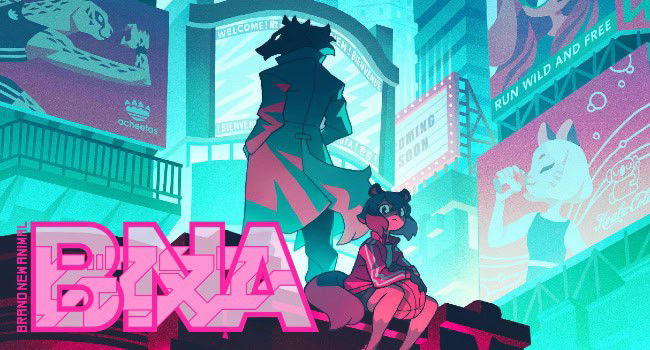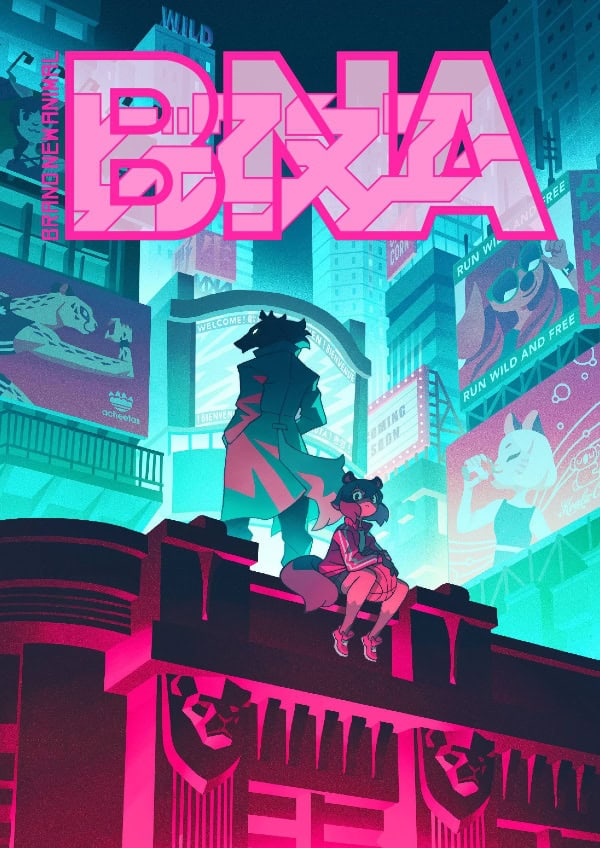Original Run: June 30, 2020 Number of Episodes: 12 Genre: Action, Fantasy
***Warning, the following may contain spoilers for BNA: Brand New Animal. Reader discretion is advised.***
Series Synopsis
Humans and Beastmen have been at odds with each other throughout history. In the modern-day, although Beastmen have earned more rights, they are still often hunted and killed. Thus, Anima City was founded, and it serves as a haven for Beastmen of all species.
Hearing the tales of safety and acceptance, Michiru Kagemori (voiced by Sumire Morohoshi) makes her way to Anima City. However, she doesn’t wish to stay long. Although Michiru may look like a Beastman, she is a human who underwent a mysterious transformation. Therefore, she is hoping to find a cure and return to her normal life.
While in Anima City, Michiru runs into Shirou Ogami (voiced by Yoshimasa Hosoya), a hardened peacekeeper and protector of Beastmen. These two are often at odds, but despite that, they make for an efficient pair.
As Michiru looks to discover the reason behind her affliction, she learns that there is more to her new form than meets the eye.
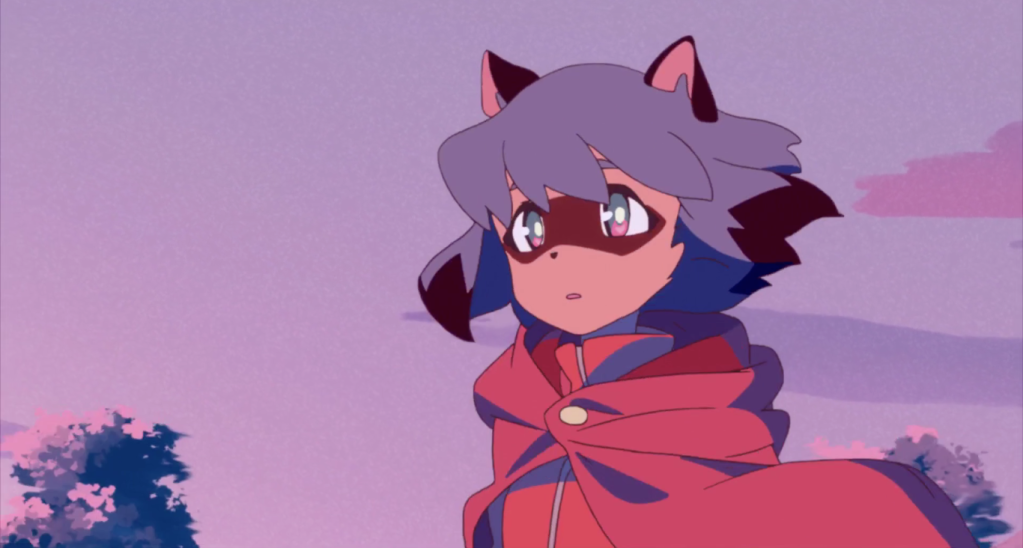
Series Positives
I only needed to hear one word, and I was instantly excited to watch this series: Trigger.
Trigger is my favorite animation studio, and I look forward to all their productions with glee. From where I sit, Trigger has never failed to deliver something substantial, if not outstanding. Although some of their projects have flown higher than others, the studio’s track record is pretty damn good.
BNA: Brand New Animal (BNA) may not have been as stellar as some of Trigger’s greatest releases – Kill la Kill and Little Witch Academia – but it was still a lot of fun. It wore it’s studio’s name with pride. That said, some aspects were lacking when compared to some of Trigger’s other series.

For instance, BNA’s animation and music, though good, were not Trigger good. This series didn’t have the same balls-to-the-walls insanity as Trigger’s other most recent project, the 2019 film Promare. Don’t get me wrong; BNA had moments – the baseball episode, for example – that were bat-s@#$ crazy. However, this series was the most subdued of Trigger’s original stories.
I’m not saying that’s a bad thing, but if you are a fellow fan of this studio, BNA does have a bit of a different feel. Nevertheless, BNA was very much a Trigger production.
Although this series lacked overall pizzazz, it had all the elements of what makes a Trigger narrative so great. For starters, BNA did a fantastic job of staying away from heavy-handed, lecture-like exposition.

When the show started, we weren’t given a five-minute history lesson on the tensions between humans and Beastmen. The series didn’t bother detailing how and why the two groups didn’t get along, nor why some humans were violent toward Beastmen. Instead, BNA offered us all the information we would need to come to our own conclusions.
Trigger does this very well. This is a production company that has a lot of faith in its audience to think for themselves; there is hardly any hand-holding. BNA was a perfect example of this. Building on the foundation laid in episode one, more complex and intriguing information was then revealed in natural ways that didn’t break up the flow of the narrative.
I will even go so far as to say that BNA is one of Trigger’s best series in this regard.
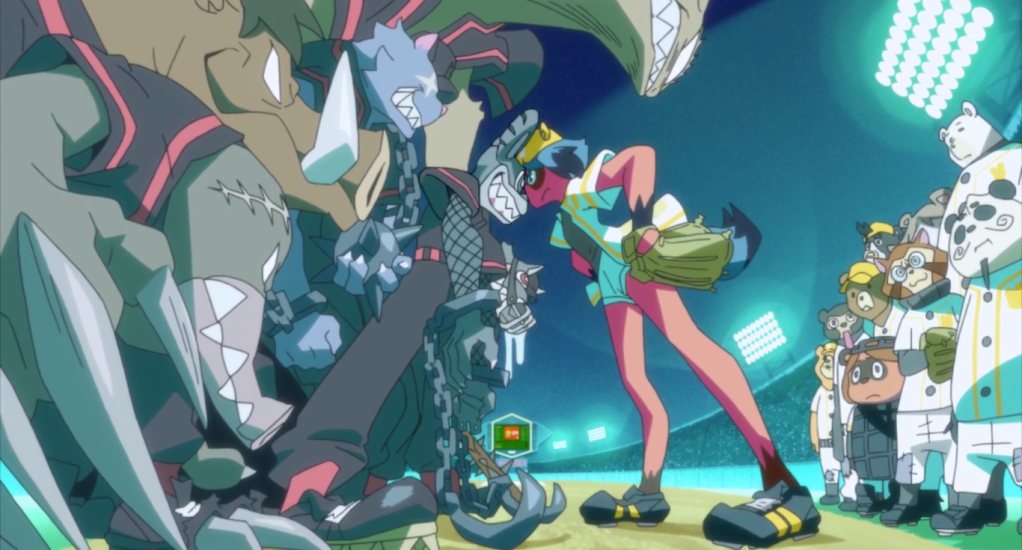
After that, BNA had a full cast of fun and interesting characters. Now, I would never forgive myself if I didn’t at least mention the Bear’s baseball team, who were hilarious, but out of everyone, the star of this show was Michiru Kagemori.
Michiru was a good mix between the lovable silliness of Little Witch Academia’s Atsuko “Akko” Kagari and the no-nonsense attitude of Kill la Kill’s Ryuko Matoi. Although Michiru could be goofy and a bit of a ditz, when it came time to act, she wouldn’t hesitate. Also, if someone did manage to tick her off, Michiru had no problem using her newfound abilities to prove a point.
More than anything, though, Michiru was a fascinating catalyst for this show to illustrate why always wanting to be the hero can backfire. Whenever she saw something that didn’t look right to her, Michiru would jump in and try to save the day, offering her help when and where she could. That might sound noble on the surface, but couldn’t such actions be equally unwarranted? Assuming everyone is in danger and in need of assistance is a knee-jerk reaction, isn’t it?
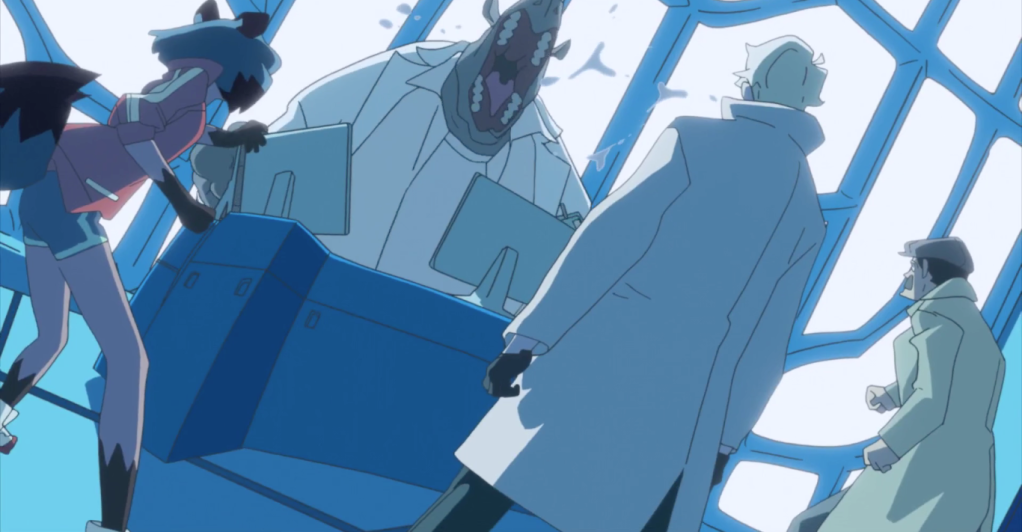
There were many times when Michiru would jump into a situation without thinking about all the facts. She would instantly believe the worst-case scenario, and wouldn’t even entertain the notion that everyone involved might be willing participants. Michiru had a bad habit of imposing her views onto whatever was going on around her. She hardly ever considered that other people might see certain events in a different, possibly more rational, light.
Michiru’s progression throughout BNA was her learning to take in as many viewpoints as possible. Instead of accusing and assuming, Michiru needed to start listening and empathizing with her friends and the people she cared about. It’s rare when I see traits often associated as heroic to be turned upside down. This was a neat interpretation, and it allowed this series to be much more meaningful.

Lastly, I do need to compare BNA with Promare once again. On the visual front, Promare was the clear winner. Still, the comparisons between the two productions don’t stop there. The stories of both BNA and Promare were quite similar in many ways. As I sat through BNA, there were many moments I was watching a re-skinned, less flashy Promare. But there was one critical difference.
BNA was much easier to follow. This series was also better paced and didn’t throw in a nauseating amount of philosophy speak. I did enjoy Promare, but its ending, though cool to look at, didn’t make much sense. BNA did not have that problem
That is why I believe it is important to rate a story by its substance rather than its style. Therefore, despite lacking the bright colors, fast movements, and epicness of other Trigger series, BNA still succeeded in being a phenomenally entertaining show.
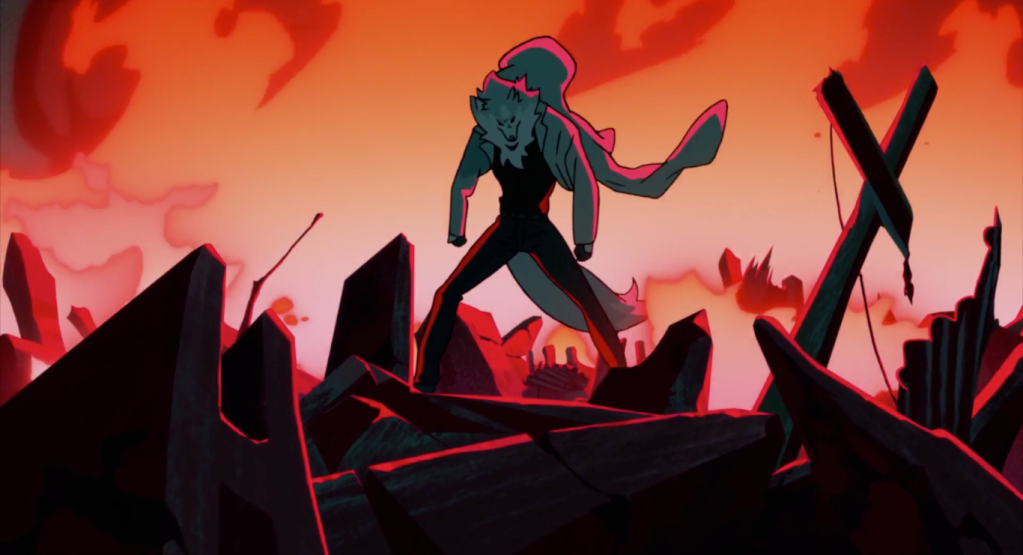
Series Negatives
I kind of already mentioned the biggest problem with BNA.
If you’ve seen Promare, then nothing in this series is going to surprise you. From the story’s progression to the villain, there is hardly any light between these two productions.
Now assuming you haven’t seen Promare, don’t go thinking BNA will blow you away. On the contrary, BNA’s narrative, despite being well-told and easy to follow, was incredibly predictable. Everyone and everything was exactly how they seemed, and not a single detailed veered off into an unexpected direction.
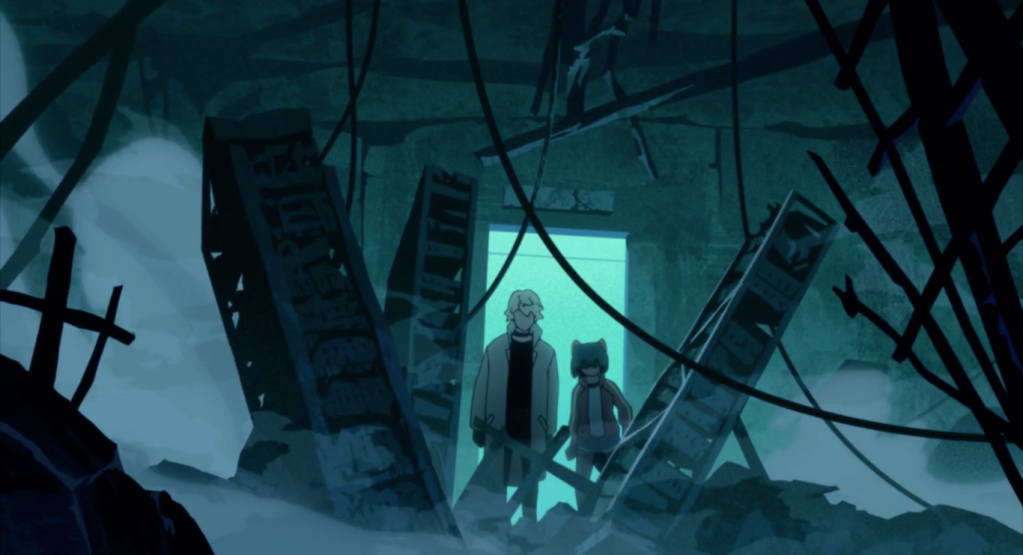
I don’t need every series I watch to blow my mind. However, BNA had these big reveal moments that probably should have been shocking and out-of-nowhere. The problem was, much of my understanding of how this show’s universe worked was based on assumptions I made about certain characters. Assumptions, mind you, that ended up being one-hundred percent correct.
Although this didn’t take away from BNA’s fun factor, I couldn’t help be a little disappointed in this regard.

Final Thoughts
This series didn’t reach the ranks of Trigger’s best works. However, it was a perfect example of why this studio is so damn good.
Minus the high-octane animation Trigger is known for; this show retained the same level of storytelling, character development, and fun that keeps getting me excited. Granted, this story was disappointingly predictable, but I can’t deny how much I enjoyed this series regardless of that.
BNA: Brand New Animal has earned a recommendation.
But these are just my thoughts. What are yours? Have you seen this series? How would you advise BNA: Brand New Animal? Leave a comment down below because I would love to hear what you have to say.
And if you’ve liked what you read and want more anime content, please follow me at LofZOdyssey Anime Reviews or on Twitter @thelofzodyssey.
Also, be sure to subscribe here at The Outerhaven and never miss any of your video game, anime, and other nerdom news and content.
Also Read: Smile Down The Runway Series Review: There Is No Impossible


